Urgent warning for Britons over Asian hornet invasion: Experts warn at least 25 have been identified in the UK this year – here’s how to spot this terrifying pest
Britons have been issued an urgent warning over an invasion of Asian hornets.
Scientists from the UK Centre for Ecology and Hydrology (UKCEH) are urging members of the public to remain vigilant and report sightings to help combat the growing threat of these invasive insects.
At least 25 sightings have been recorded in the UK this year, with scientists warning that the peak months for Asian hornet sightings are yet to come.
Without early detection and rapid response, the species could soon become established in the UK.
Kate Wilson, head of the National Bee Unit, said: ‘Stay alert for Asian hornets and if you think you have seen one, please report your sighting via the Asian hornet app.’
Britons have been urged to be on the lookout for invasive Asian hornets (pictured) as 25 sightings have already been reported this year
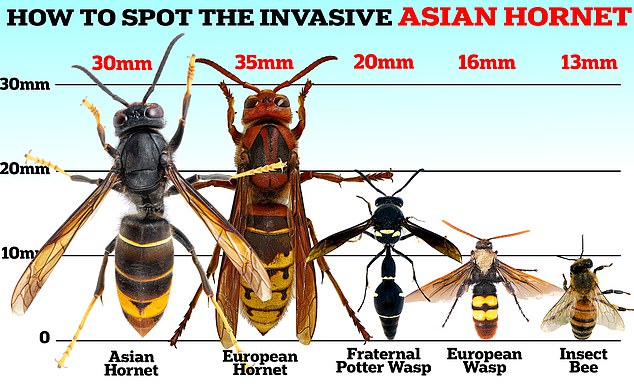
Experts say Asian hornets are dangerously close to establishing themselves in the UK, and are urging members of the public to report any suspected sightings
Asian hornets were first introduced into the UK in 2016, but have spread much more aggressively in recent years.
Since their arrival, there have been 126 confirmed sightings, including the discovery of 89 nests. 72 of those sightings were made in 2023 alone.
This sudden increase in reports has raised concerns that the invasive species may also become established in the UK.
These concerns were further heightened when scientists discovered the first evidence that a swarm of Asian hornets, also known as yellow-legged hornets, had ‘wintered’ in the UK.
Researchers found that the hornet queens found in East Sussex were closely related to queens found in the town of Rye the year before.
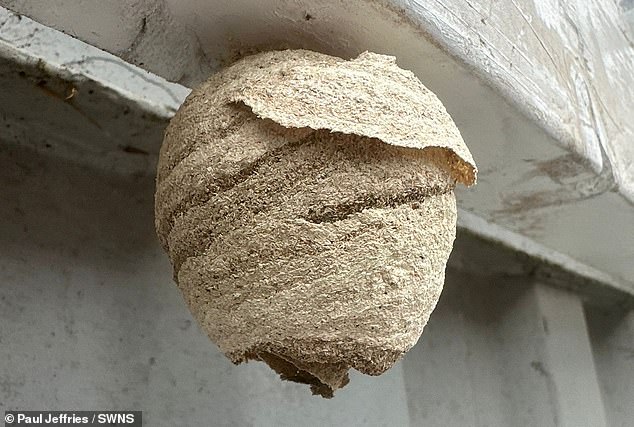
So far, one wasp nest has been identified and destroyed. Pictured is an Asian wasp nest at a roadside restaurant near Canterbury in May this year.
This shows that in at least one nest queens, the so-called gynes, were born that survived the winter and built their own nest in the spring. This is an important step towards an established population.
However, Professor Helen Roy, an ecologist at the UKCEH and the University of Exeter, says there is still time to stop the invasion.
She said: ‘The evidence that yellow-legged hornet queens are overwintering is worrying, but that doesn’t necessarily mean we have an established population here in the UK.
‘The strategy is to destroy nests to prevent queens from dispersing, so the role of people reporting possible sightings through the app is crucial, so we can pass that information on to the National Bee Unit, who can respond as quickly as possible.’
Thanks to over 10,000 reports via Asian Hornet Watch, the National Bee Unit was able to identify 25 confirmed cases and destroy one nest.
Professor Roy added: ‘Citizen scientists provide valuable information on the presence of yellow-legged hornets (Asian hornets) in the UK, even though only a fraction of reports are confirmed sightings. Every record counts and ensures that the few confirmed sightings are managed effectively.’
According to a 2023 report from the University of Exeter points out that the National Bee Unit is very efficient in locating nests, but that the agency’s resources are already limited.
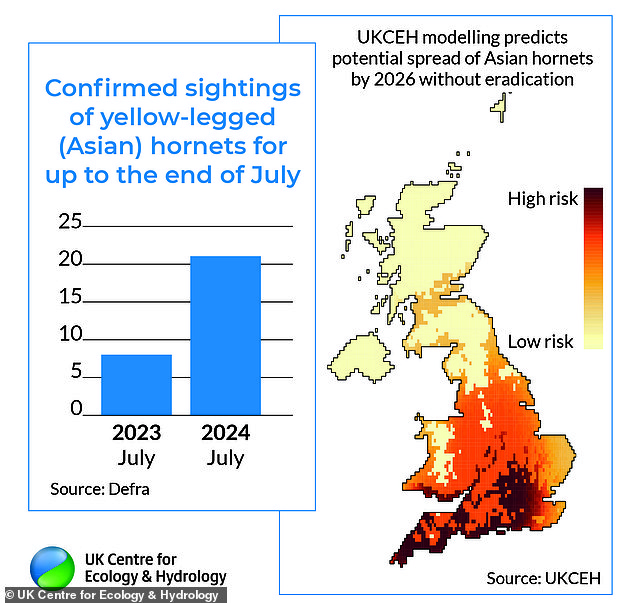
There have been 25 sightings this year, compared to fewer than 10 in the same period last year. Modelling (right) now predicts that hornets could spread to almost every part of the UK by 2026 if these nests are not eradicated.
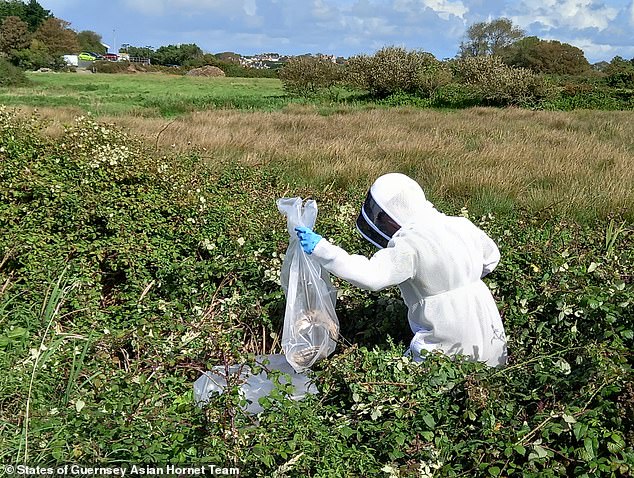
The National Bee Unit is effective at removing nests, but their resources are already stretched thin. It is not yet clear at what point they will be overwhelmed by multiple raids. Pictured: Expert teams remove another in Guernsey
The authors write: ‘It has not yet been investigated at what stage their current resources would become overstretched by multiple simultaneous invasions of Asian hornets into the UK.’
As we approach September, Asian hornet colonies are increasing in numbers and sightings are expected to peak.
If nests cannot be detected and destroyed before they have a chance to breed, one nest can produce as many as 350 mated queens, each of which can start her own nest.
Asian hornet activity has so far been largely confined to south-east England, with Kent being the worst affected.
However, they have also turned up in Sussex, Surrey, Hampshire and London, with isolated confirmed sightings in parts of south-west England and even as far north as Yorkshire and Northumberland.
Recent modelling shows that the climate in the UK, with the exception of some areas of Scotland, is suitable for these invasive insects.
This is particularly concerning because Asian hornets feed on native pollinators such as wasps and honeybees.
Each hornet nest can eat about 11 kilos of insects per year. They prefer to hunt social insects, such as honeybees, which have little defense against these fierce hunters.
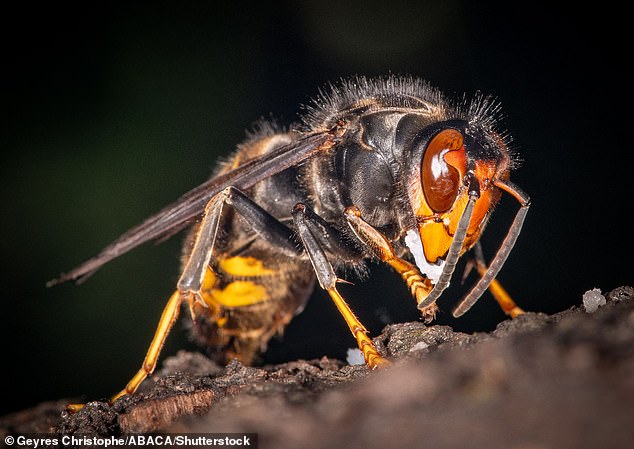
Asian hornets are of particular concern to the UK as they prey on our native pollinators including wasps and honeybees.
The invasive Asian hornet is often confused with the native and ecologically important European hornet.
Professor Roy says: ‘One of the easiest ways to identify them is to look at their legs.
‘Yellow-legged hornets have yellow and brown legs, while the legs of European hornets are only brown.’
Asian hornets are smaller and slimmer than their European counterparts and appear orange when viewed from the front.
If you see an insect that you think is an Asian hornet, you are urged to report it via the Asian Hornet Watch app or online via the UKCEH online reporting form.
All sightings you report via the app will be double-checked by UKCEH. However, if you only report genuine sightings, we can use our resources more effectively.
Professor Roy added: ‘The vast amount of data we receive from citizen scientists is helping to develop the warning system and our experiences are proving useful to share with others who want to develop similar systems around the world.’
